Blog
Juice vs. Blend: The Final Showdown!

Do you juice your vegetables and fruits? Do you blend them? Are you wondering which is better? Which is worse?
At Above And Beyond Acupuncture, nutritional guidance is a key component of our treatments and is discussed with each and every patient. Since nutrition is the cornerstone of health and wellness, it must be properly addressed so that the body can support and heal itself.
One popular suggestion that is frequently presented to our patients is juicing (or blending) vegetables on a daily basis. Starting each morning with juice is an amazing way to provide the body with an array of nutrients, minerals and vitamins. It also has a beneficial impact on the digestive system and provides a significant boost of energy, something everyone can benefit from.
When this topic is discussed, many people often inquire whether they should be using a juicer or a blender. Since this is a hot topic, we wanted to take some time to discuss the advantages and disadvantages of each. If you’ve been on the fence about which device to buy, read this blog post to learn more about juicing versus blending.
Is juicing better than blending?
Juicing is a great option for many people looking to improve their health and hydration. When you juice raw vegetables, you obtain almost all of the natural nutrients, including antioxidant phytochemicals. These are bioactive plant-derived compounds that have positive health benefits.
The process of juicing involves extracting all the liquid from fruits and vegetables while separating the fiber and skin. When consuming juice, there are minimal amounts of energy required by the body to immediately assimilate the nutrients. This is in opposition to blending, which requires energy from the body to extract vitamins and minerals from smoothies that contain pulp.
When it comes to purchasing a juicer, there are many different options, features and price points. It’s not always necessary to buy a top-of-the-line machine to make juice, but it is important to do your due diligence before making a purchase. The ability to spend a moderate amount for a decent juicer is an advantage over powerful blenders that can cost hundreds of dollars, since it takes a rather formidable blender to make a smoothie that is thin and easy to drink.
One brand of juicers that we recommend to our patients is the Juiceman, a product that we have been using for the past few years. There are many other great juicers on the market, but this is the one that has proven to be dependable and capable for our juicing needs.
Is blending better than juicing?
Blending fruits and vegetables is a popular way of consuming produce. This is done by creating smoothies that contain all of the fiber and skin. Blenders liquefy the entire fruit/vegetable by chopping it up with a blade that spins at very high speeds.
The main advantage of a blender is that it contains the entire piece of fruit or vegetable, whereas a juicer extracts the juice and discards the rest. The body uses the fiber to prevent rapid absorption of sugars too quickly into the blood stream. By slowing this process down, sugar spikes—which often lead to energy crashes—are avoided.
Since smoothies contain lots of fiber, they are more filling and will satisfy a person’s appetite for longer durations, leading to less snacking. Fiber is also an essential nutrient, aiding with digestion and helping to alleviate gastrointestinal issues. The skin of fruits and vegetables contains most of the nutrients, which is a big reason why some people prefer blending their produce.
When it comes to buying a blender, there are many options available. The old adage “you get what you pay for” comes into play and should be considered. Using a low-cost blender will create smoothies that can be thick, choppy and tough to consume, which many people find to be undesirable. If you can afford a Vitamix or Blendtec blender, you will be able to make smoothies that are thinner and less pulpy. There are other options available, as well. It is important to consider the horsepower, as that will help to determine how thin your smoothies are.
Should I juice or should I blend?
The answer to this question can be determined based on personal preference or on the information listed above. It is true that consuming the fiber and skin of fruits and vegetables will provide additional nutrients; however, not everyone prefers the thickness and pulp of a smoothie.
The cost of a blender will also become an issue, as the low-end machines are often under-powered and create thicker smoothies (which aren’t so smooth.) If price isn’t an issue, then we would suggest purchasing a Vitamix or Blendtec blender. Both of those brands are built well, have strong motors and are quite versatile. The smoothies you will make with these devices will come out thin and easy to drink.
In summation, there are definite advantages and disadvantages to juicing and blending your fruits and vegetables. It is our hope that this blog post provided some helpful information and assisted you with making an educated decision regarding how you make your juice or smoothies. There is certainly a lot of information found on the Internet as well, and we urge you to do the necessary research before making your decision.
At Above and Beyond Acupuncture, we offer a variety of health services, including acupuncture, Chinese herbal remedies and nutritional counseling. If you’d like to feel your best and are in the Scottsdale, Mesa, Tempe or Phoenix areas, give us a call or use our online scheduler to book an appointment.









